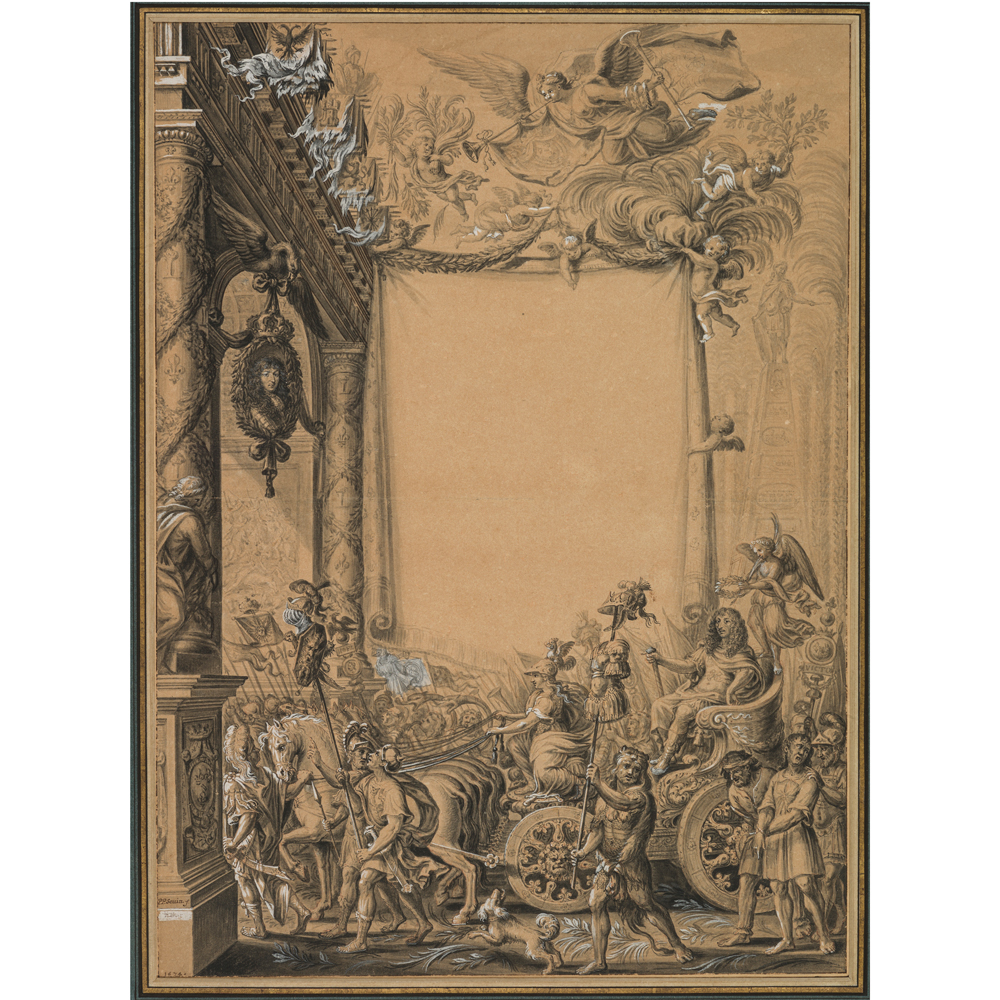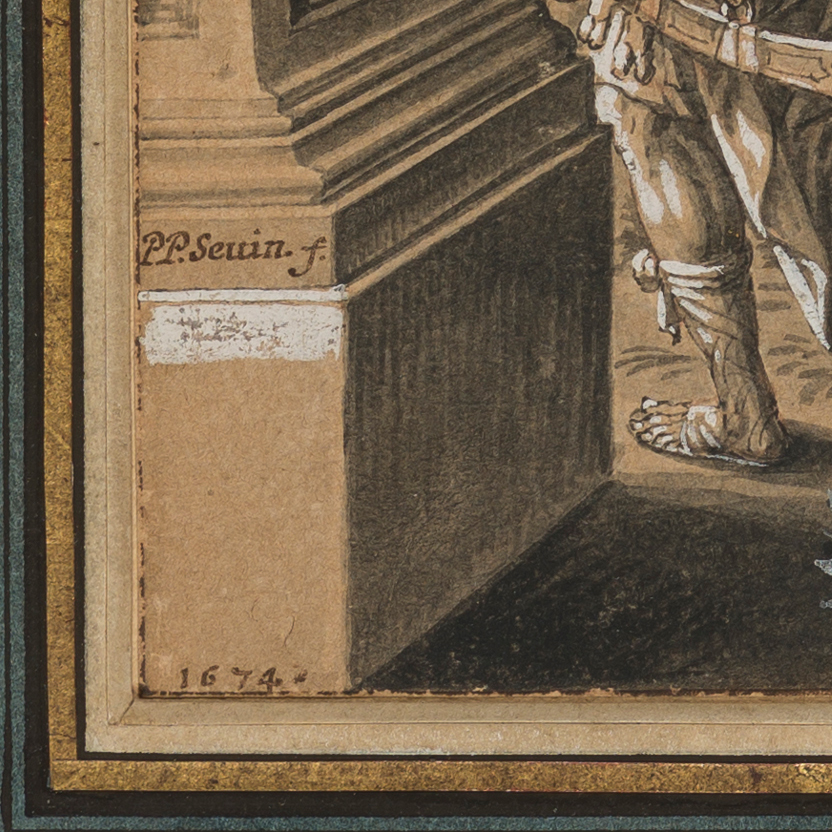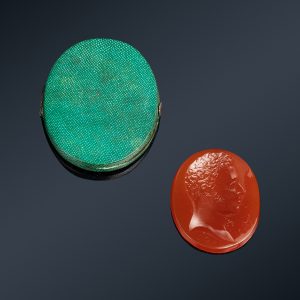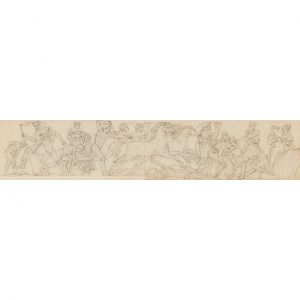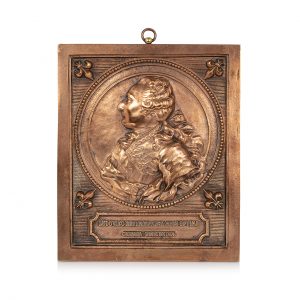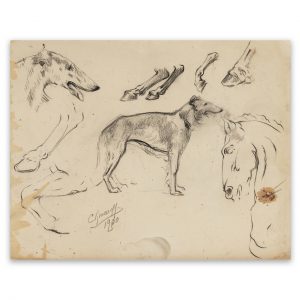Pen and black ink, gray wash and heightened white gouache.
Signed and dated lower right: P. P. Sevin. f/1674.
H. 51 x W. 37 cm.
The Grand Conde. The Sun King's Rival?, cat. exp., Chantilly, Condé museum, 2016, fig. 1, p. 12.
The particular talent of this court artist assigned him the place of a donor of models for frontispieces, engravings of almanacs, vignettes and ornaments. His invention in this genre and his ability to translate the splendor of the great events of his time – triumphal entries, funerals, princely feasts – make him one of the most refined illustrators of the reign of the Sun King. Thanks to the protection of Father Ménestrier, he composed sets for the Jesuits on various occasions and was associated with certain orders for the Menus Plaisirs du Roi. In Lyon, his hope of occupying the office of master painter of the city was disappointed, no doubt because of the nature of his talent, excluding the practice of history painting which had distinguished the previous official artists of the city. , such as Horace Le Blanc and Thomas Blanchet. The Triumph of the Grand Condé shows, however, that in the absence of handling the brushes, the artist was familiar with the great genre and was able to invent compositions of a heroic nature.
Young winner of the battles of Rocroi, Nördlingen, then Lens, Louis II de Bourdon, Prince of Condé (1621-1686), was one of the great military heroes of the reign of Louis XIV. Mazarin's hostility towards him first places him in an ambivalent position, leading him to turn against the royal camp during the Fronde. This episode, which led him to join forces with Spain, was not very successful for him, since he suffered several military failures under this foreign flag. The Treaty of the Pyrenees (1659) is nevertheless favorable to him, the royal pardon being granted to him in exchange for his loyalty. The Wars of Devolution (1667-1668) and Holland (1672-1675) gave him the opportunity to demonstrate this by distinguishing himself against the armies of William of Orange and the Germanic Empire.
As the date of 1674 indicates, it was Condé's last successes that this triumph in the Roman style, composed by Sevin, celebrates, no doubt as a frontispiece project, as indicated by the central space left in reserve as a tapestry. unfolded. He shows his procession, accompanied by the usual attributes of victory – trophies carried on peaks, prisoners – passing under a triumphal arch to which hangs a portrait of Louis XIV in a medallion. The style of the composition recalls that Sevin resided in Italy, from 1666 to 1671, and that all his work retained its lasting imprint. But the arrangement is reminiscent of that of the Triumph of Alexander, a large machine painted by Charles Le Brun ten years earlier (ill. 1), and which Sevin seems to have wanted to imitate on a small scale.
The artist will celebrate the dead Grand Condé as he did during his lifetime by composing decorative projects for his funeral directors, now kept at the Carnavalet museum (Drawing of the apparatus for the burial of H.S.H. Mr. Louis de Bourbon , Prince of Condé, in the Church of the professed house of the Jesuits in Paris) and at the National Library (Damien Chantrenne, "Unpublished projects concerning the funeral directors of the Grand Condé by Pierre Paul Sevin", Histoire de l'art, June 2004, No. 54, pp. 59-72 For a study of the artist's work, see: Damien Chantrenne, Pierre Paul Sevin, illustrator and designer of decorations for parties and ceremonies under Louis XIV, Thesis of doctorate, Paris IV-Sorbonne, 2012, 5 volumes (Gérôme de La Gorce dir.)).
Charles Le Brun, The Triumph of Alexander, or Entry of Alexander the Great into Babylon, 1665. Oil on canvas. Paris, Louvre Museum.


